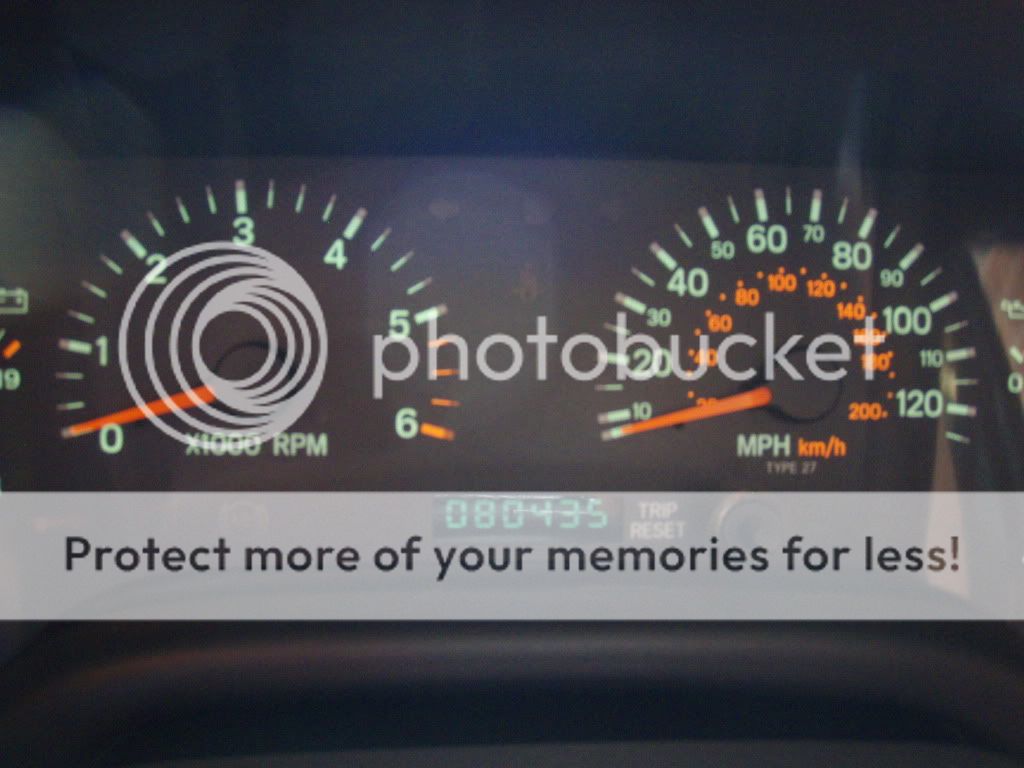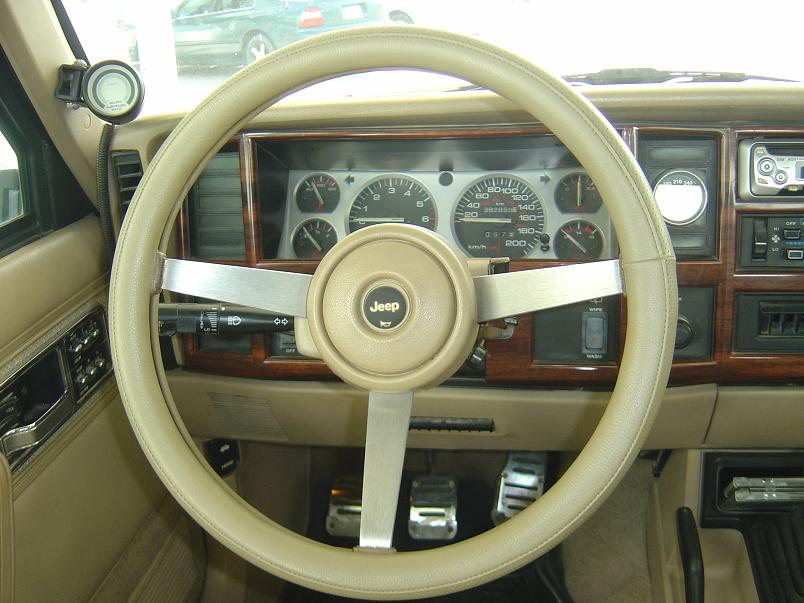That looks great. Couldn't help but notice your speedo, what happens to your Jeep at 100 mph? Here's mine...


Nothing.. it keeps going until it hits the speed limiter around 130 iirc. Which I have done only twice. The fun happens at 88 mph.That looks great. Couldn't help but notice your speedo, what happens to your Jeep at 100 mph?
Nothing.. it keeps going until it hits the speed limiter around 130 iirc. Which I have done only twice. The fun happens at 88 mph.
More like a retaining wallThe wind must get LOUD going that fast in a vehicle that has the same aerodynamics as a brick. lol
I want that multi gauge, just awesome.
The Canadian versions go up to 130mph

Not that I remember. But I was also paying more attention to driving, so I probably may have missed it.The wind must get LOUD going that fast in a vehicle that has the same aerodynamics as a brick. lol
That is completely different. That just pulls OBD II data, which isn't anything special, relies on the stock sensors and what the PCM is telling you. You have no redundant oil pressure gauge, no tranny temp, and no oil temp.You can buy an ultragauge for $60, they're pretty cool.
That is completely different. That just pulls OBD II data, which isn't anything special, relies on the stock sensors and what the PCM is telling you. You have no redundant oil pressure gauge, no tranny temp, and no oil temp.
No it doesn't do the same thing, not even close. Mine works off after market sensors, not some might-be-in-range stock sensor, two of which the PCM doesn't even have (let me know when you find transmission temp sensor and oil temp sensor in the PCM's data). The data I see isn't filtered through the PCM nor slowed down by it. My curves are custom calibrated so I know it is 100% accurate. I can also change nearly anything in my system and add features. I can replace an individual failing component instead of the whole system. My display is smaller and more discreet, with the computer section hidden away.But for 60 bucks it does the same thing is all I'm saying,
No it doesn't do the same thing, not even close. Mine works off after market sensors, not some might-be-in-range stock sensor, two of which the PCM doesn't even have (let me know when you find transmission temp sensor and oil temp sensor in the PCM's data). The data I see isn't filtered through the PCM nor slowed down by it. My curves are custom calibrated so I know it is 100% accurate. I can also change nearly anything in my system and add features. I can replace an individual failing component instead of the whole system. My display is smaller and more discreet, with the computer section hidden away.
So, mine gives a highly accurate customizable and upgradable display of sensor data, where that one might be in the ball park.

NO, they aren't.OEM sensor are just as accurate if not more so than aftermarket sensors but ok
The only redundant one is the oil pressure, which is the single most important variable to engine life, and if you actually compared it to a good sensor you would realize how off the stock gauge is in both reaction time and readings. As far as programing, it might be a difficult thing for you, but its easy for me.. oh and its enjoyable to make something that has a function. Do a search and let me know how many low oil pressure or high oil pressure false alerts have been attributed to the stock sending unit. Again, find me the transmission temp and oil temp sensor in the PCM. OBD II can't just make stuff up. Oh.. and while you are at it.. let me know how that scangauge or ultra gauge fuel economy displays do when you change fuel injectors. Since you know so much about OBD II you should then know the more data (sensors) you tried to read from it the slower the output is. So by the time either of those two gauges or the stock gauge alerts you to a loss of oil pressure and you react your engine is already damaged. And again, you have to rely on data that is filtered through the PCM and only what the PCM has access to. And if I did want to add on OBD II data, it would be as simple as adding the module and writing the code. As far as other upgrades: Data logging? Sure. G-force meter? Sure. Wideband o2 sensor integration? Sure. Lock the doors after the vehicle is moving? Sure. Second display? Sure. Larger/graphic display? Sure. I don't think any of those other gauges can do that.Customizable and upgradable? In order to "customize" or "upgrade" yours, you would have to either add new "redundant" (in this case, a better sounding word for superfluous) sensors or backprobe existing OEM sensors and reprogram your arduino board to display them. OR, with something like the ultragauge, you could push a button. Lol you tell me which is more customizable and upgradable :roflmao:
again... where are the stock transmission temp and oil temp sensors on XJ? And mine is still smaller. 3.42"x1.6x1"And if being "small and discrete" is your thing, which it sounds like it is, then get a scangauge

Again, you are wrong (which you are good at, perhaps you could find a position as a weather man in your area). I informed you of the difference between the two units.. thenAnd just for the record, I didn't decide to be a dick until AFTER you got all butthurt because you ASSumed that I was pooping on your little project. When in reality, I was offering guidance to where someone could buy something that they were interested in but would probably never actually build. I'm sorry that I hurt your feelings though, here's a bird.wl:
you feigned ignorance, are just plain ignorant, or simply can't read very well.I must be missing something... enlighten me.
Its for cam gear/oil pump drive gear oiling. The fitting that goes into the block is a .015" orifice from McMaster.
